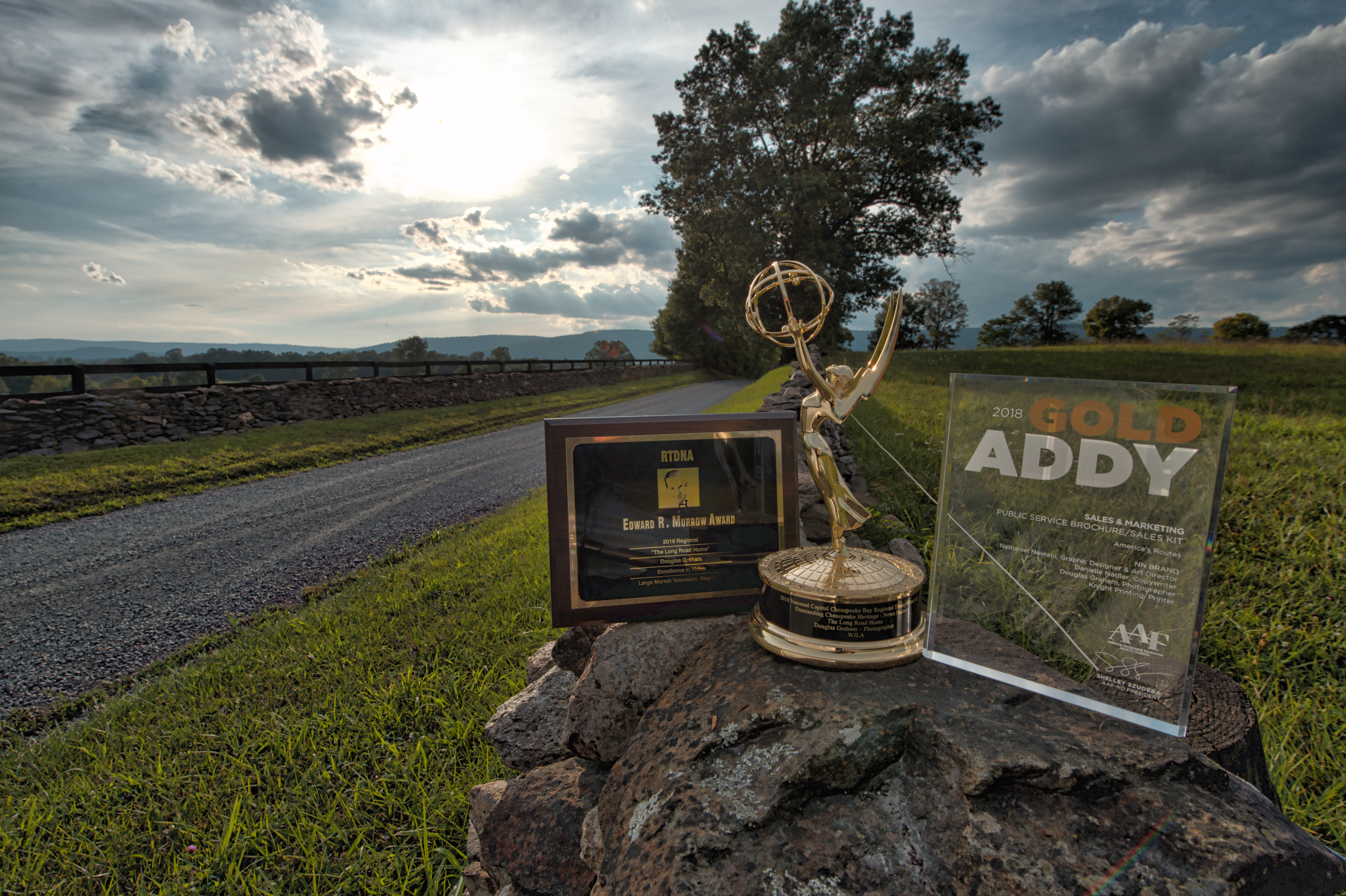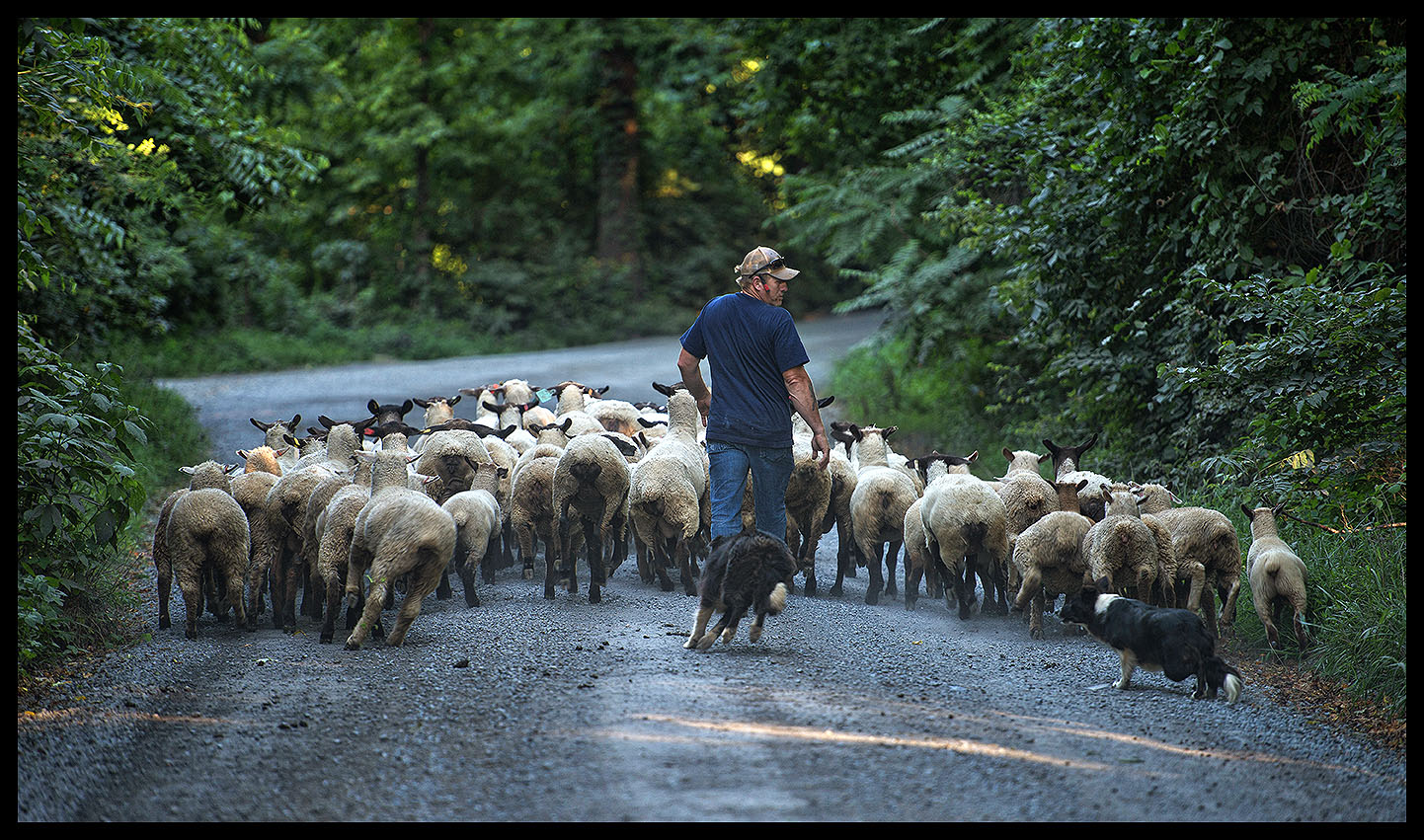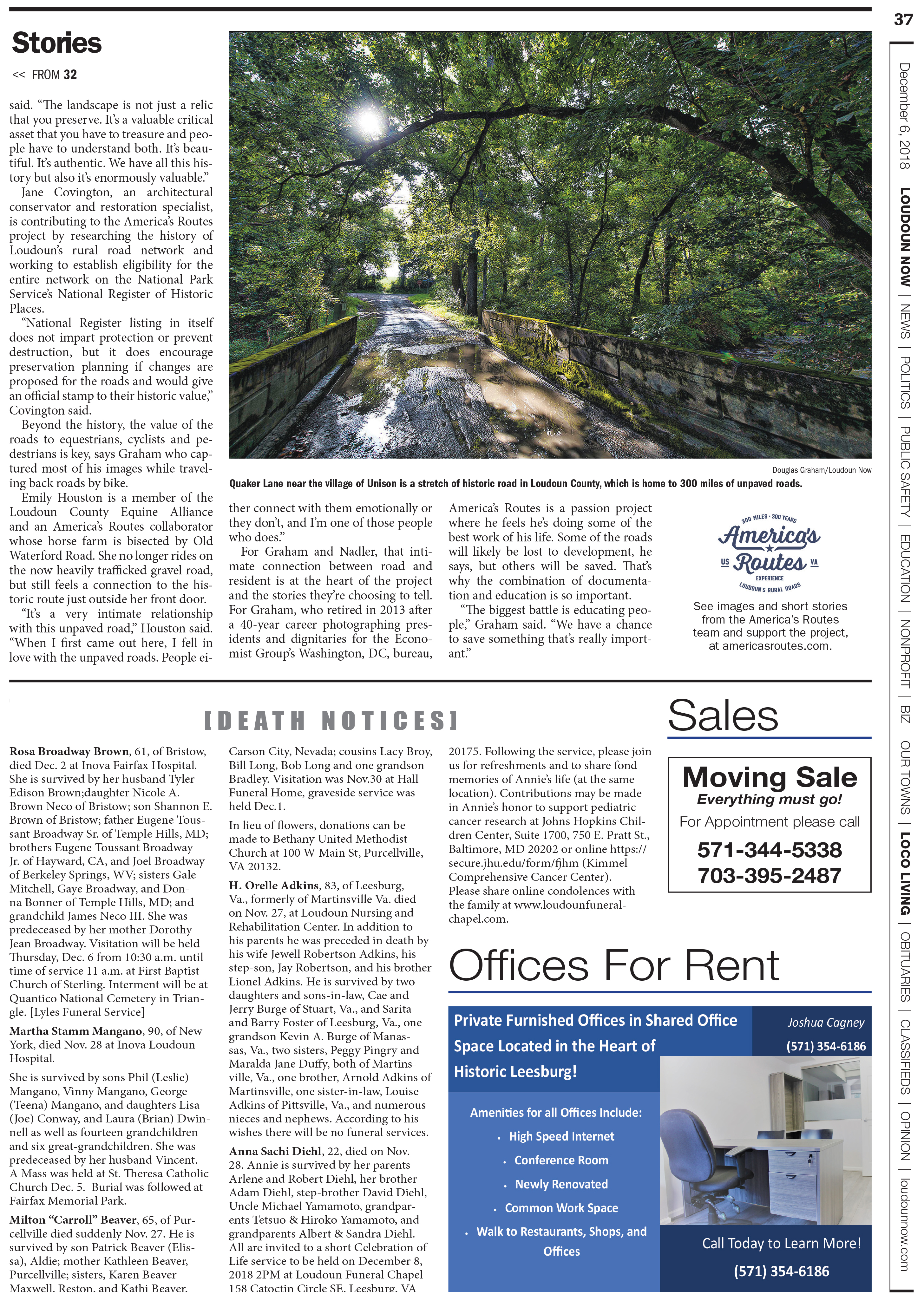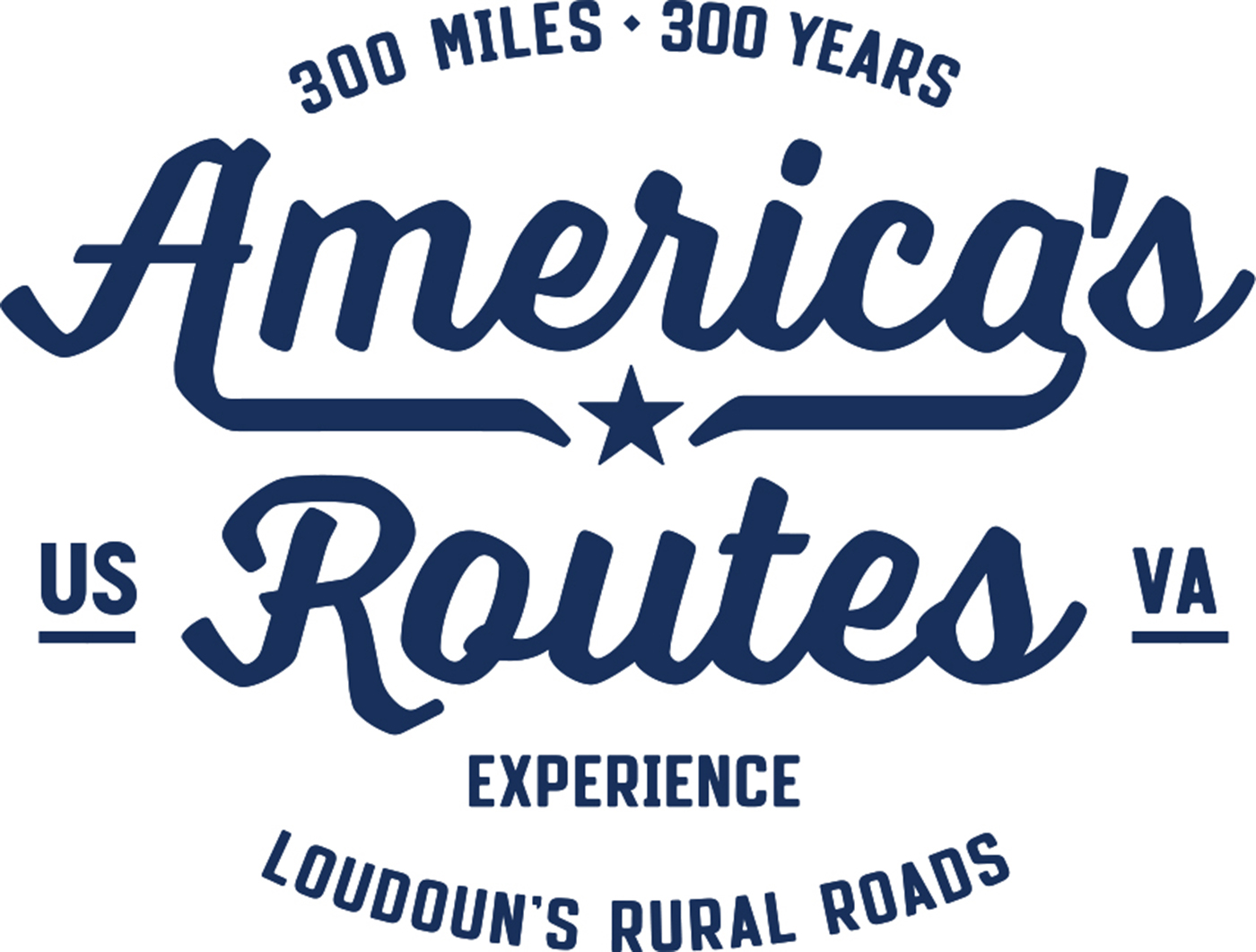Global Cycling Network
February 2024
The plan to save Virginia’s historic gravel roads from being paved over

Click the link below to read the story
The Washington Post
February 2024

Click the link below to read the story
Kasey Clark Supports
“America’s Routes”
Sunday June 11, 2023

Kasey Clark once again has thrown down the gauntlet and rode all three courses during the 5th Annual 1725 Gravel Grinder totaling 182 miles of gravel with 14 thousand feet of elevation gain to bring awareness and additional financial support. A fund raiser within a fund raiser.
Kasey’s efforts raised over $4000.00 dollars and also awareness about the work being done by America’s Routes to save out historic roads.

If you would like to donate for his efforts the button is under the “donation tab” make a note on the donation that its for his ride and show Kasey and America’s Routes some love.
Loudoun County Rambler makes NPR

Published story in Middleburg Life Magazine
America’s Routes Wins Significant State and National Recognition for Loudoun’s Rural Roads
FOR IMMEDIATE RELEASE – July 6, 2020
Loudoun County’s 300-year-old rural road network has received significant recognition as a valuable historic asset. On June 18, the Virginia Department of Historic Resources (VDHR) declared the roads officially eligible for listing on the Virginia Landmarks Register and the National Register of Historic Places, at its quarterly meeting of VDHR’s State Review Board. The usual historic site gaining support from VDHR is a building, a battlefield, a structure or set of structures with a specific role in historic time periods, or the lives of residents. The concept of determining an entire network of hundreds of miles of roads eligible for the high state and national honor was quite novel for the state organization.

There was little precedent in Virginia and around the United States, though in 2002, one section of the old roads, in southwestern Loudoun, was declared a County Historic District by our Board of Supervisors. In May, Preservation Virginia had listed the roads on its “Most Endangered Historic Sites” list for 2020, but this most recent designation by VDHR demonstrates the value the state puts these roads as a “living museum” with three centuries of the county’s history woven into the twists and turns of these humble roads.

VDHR’s determination that the road network is eligible for listing on the Virginia and National Registers of Historic Places required clear demonstration of both their historic significance and physical integrity.

Professional preservationist Jane Covington, who has generated many successful applications for State and National Register listings in Loudoun (including most recently the placement of the village of Willisville on the National Register), led the effort on behalf of America’s Routes. Americas Routes is a local group dedicated to celebrating Loudouns rural roads and cultivating their appreciation as an historic asset. (See the website: AmericasRoutes.com.)

Covington’s several year’s long work with the VDHR staff was based on careful and extensive research, building a clear case for the network’s historic significance and physical integrity. The document approved by VDHR demonstrated the crucial role the road network had in our migration, agricultural and cultural patterns of life in Loudoun’s three centuries of history. As Covington’s submission indicated, Loudoun’s old roads pre-date America, carved out of the hilly terrain by early settlers who built prosperous agricultural communities. Terrible wars, slavery, and the struggle for freedom, the coming of the automobile, and the modern era of commuters living side by side with farmers, all make the history embedded in the roads the tale of a very American experience.

Further, her research clearly showed that despite generations of grading, repairs and adjustment the routes and alignments of Loudoun’s old roads still authentically capture their long history of supporting the county’s communities and economy. According to Covington, “Loudoun County’s 2019 Comprehensive Plan acknowledges the importance of the county’s historic roads to the character of the rural landscape of western Loudoun.” She notes that the Comprehensive Plan recognizes their importance for recreational use by walkers, bicyclists and equestrians.

Local elected officials have expressed their support for America’s Routes’ effort to highlight the roads’ historic value and garner support for their preservation. “Now, more than ever,” she says, “this unique feature of our county combines our need to celebrate history with our need for useful recreational spaces.”

The need for these gravel roads to function as part of a transportation network in the 21st century has highlighted the quandary of how to preserve them as authentic historic assets without succumbing to the demands for high-speed travel. Of the 700 miles of public roads in western Loudoun’s Rural Policy Area, more than one third are unpaved. The roads are under pressure from increasing traffic, but VDOT is experimenting with new materials and techniques to help preserve them and provide safe and reliable transportation. As Covington stated, “this recognition bestowed by VDHR may help ensure their future.”
For further information, contact:
Jane Covington (jane@janecovington.com; 434-960-4678)
Emily Houston (emilyzs@yahoo.com; 571-215-2234)
For additional photos, contact:
Douglas Graham (wgwildlightphotos1@gamil.com; 540-467-2277)
Preservation Virginia’s most Endangered Historic List
June 1, 2020
Preservation Virginia identifies commonwealth’s most endangered historic places.

This year’s list reflects importance of historic preservation in time of crisis and recovery and how, now more than ever, we can look to our history for encouragement.
RICHMOND, Va. (May 19, 2020) – A sacred Monacan Indian Nation site in Fluvanna County; a historic church more than a century old in Danville; and a 300-mile network of rural roadways in Loudoun County are among Virginia’s Most Endangered Historic Places for 2020 unveiled today by Preservation Virginia.
Each May — National Historic Preservation Month— since 2005, the nonprofit releases a list of
historic places across the state that face imminent or sustained threats to their integrity to
encourage individual citizens, organizations, and local and state government to continue advocating for these places’ protection and preservation.
Virginia’s Most Endangered Historic Places list for 2020 includes, in no particular order:
● Rassawek, the historic capital and sacred site of the Monacan Indian Nation, located at the confluence of the Rivanna River and James River in Fluvanna County.
● Alexandria Elks Lodge #48, a community hub for African American Elks and residents in
the Parker Gray Historic District for over 115 years.
● James Street Holiness Church, founded in 1891 in north Danville by African American preacher Bettie Thompson.
● Pine Grove School Community, a rural African American community of businesses,churches, cemeteries and homes of students who attended the Pine Grove Rosenwald School in Cumberland County.
● Western Loudoun County’s Rural Road Network, a living museum of 300 miles of gravel roadways that traverse the Loudoun Valley.
● Historic Metal Truss Bridges statewide. In 1975, Virginia had approximately 620 metal
truss bridges; only about five percent remain today.
● Halifax Roller Mill, a three-story, flour and feed mill built in 1915 to use electric power rather than water in the Town of Halifax.
“We understand we are living through quickly evolving times during this pandemic. Life has changed, and our mission to protect and reuse historic places has become more challenging,” said Preservation Virginia CEO Elizabeth S. Kostelny. “While we continue to see historic places of all types remaining resilient across the state, our list highlights longstanding issues that need to be addressed and cannot be forgotten during times of crisis.” For example, Kostelny said four of the seven historic places cited this year are connected to underrepresented communities. One is Rassawek, the historic capital of the Monacan Indian Nation. “Our capital city was a contemporary of Jamestown, but much larger and more complex, and it lasted as a community far longer,” said Tribal Chief Kenneth Branham. “It is for us a sacred place of great cultural significance, and it is for all Americans a place of historical importance.” Now threatened by a water intake station, this sacred site is in peril. Two of this year’s listings are transportation-related, reflecting the rate at which Virginia is losing bridges and roads important to its historic landscape, with significant efforts needed to foster these places before they are lost. With museums temporarily closed and future funding opportunities potentially in doubt, preservationists are now approaching their work in new and creative ways, says Kostelny. “Over the next few years, as we adapt to the challenges of living in a post-pandemic world, Preservation Virginia will help to counter the specific threats identified in this year’s Virginia’s Most Endangered Historic Places list. In addition, we will demonstrate how—using proven tools of historic preservation as well as innovative new models and collaborations—Virginia’s historic places help recharge our spirits and restore local communities.” “Now more than ever, we can look to our past for renewal and strength.”

For more information on each location, contact the following: Rassawek (Marion F. Werkheiser, 703-489-6059); Elk’s Lodge #48 (Carol Black, carolpblack@hotmail.com);
Halifax Roller Mill (Carl Espy, 434-476-2343); Historic Metal Truss Bridges (Kristie Kendall, 540-347-2334 ext. 706); James Street Holiness Church (Rita Smith, 434-792-2021); Loudoun’s Rural Roads Network (Jane Covington,jane@janecovington.com); Pine
Grove School Community (Muriel Branch,storytellermuriel4@gmail.com), Preservation
Virginia (Will Glasco, 804-338-1357 or wglasco@preservationvirginia.org).
About Preservation Virginia
Preservation Virginia is a private, nonprofit organization and statewide historic preservation leader founded in 1889 that is dedicated to preserving, promoting and serving as an advocate for
Virginia’s cultural and architectural history.
FOR IMMEDIATE RELEASE
June 26, 2019
America’s Routes Documentary Wins Emmy

America’s Routes Photographer Douglas Graham and ABC7/WJLA Reporter Jay Korff won an Emmy for their documentary “The Long Road Home” about the America’s Routes project.
The two journalists teamed up on the 8-minute documentary, which captures the beauty and significance of Loudoun County’s unpaved roads and the fight to preserve them. It introduced viewers to America’s Routes, a team of journalists, historians and preservationists who are leveraging stunning images, meaningful storytelling, and historical research to encourage the public to hold on to this nearly 300-mile rural road network.
These dusty byways tell the stories of pioneers, wars, slavery and the struggle for freedom, the coming of the automobile, and the modern era existing beside traditional farms. Rather than allowing rural Loudoun and its roadways to turn into anywhere America, this initiative seeks to document, commemorate and educate about this irreplaceable resource. And, most importantly, its mission is to invite others to experience these roadways themselves, whether by car, on foot, bike or horse.
“No one with America’s Routes wants to discourage Loudoun’s success. On the contrary, members believe the region’s economy thrives thanks to the county’s bucolic charm,” Korff says in the documentary.
The 61st Emmys were presented by The National Capital Chesapeake Bay Chapter of The National Academy of Television Arts and Sciences on Saturday, June 22, at the Bethesda North Marriott Hotel & Conference Center.
The documentary also won Korff, Graham, and WJLA drone operators Richard Chamberlain and Alex Brauer the prestigious Edward R. Murrow award for Excellence in Video.
Watch the video, and find America’s Routes’ photos, short stories, and a history tour that can be done on foot, horseback, bicycle or by car at AmericasRoutes.com.
For more information, visit americasroutes.com or call 540-687-6681.
NOTE TO EDITORS: Doug Graham may be reached at 540-467-2277
FOR IMMEDIATE RELEASE
May 16, 2019
America’s Routes photographer Douglas Graham and Jay Korff of ABC News have been nominated for a 2018 Emmy Award for the story, “The Long Road Home”. The finalist will be announced Saturday, June 22nd during the 61st Emmy® Awards Gala at the Bethesda North Marriott Hotel & Conference Center.

FOR IMMEDIATE RELEASE
April 23, 2019

Its official Jay Korff of WJLA, Douglas Graham of America’s Routes, and WJLA drone operators Richard Chamberlain and Alex Brauer, are regional winners of the prestigious Edward R. Murrow award for Excellence in Video for their work on the documentary “The Long Road Home.”
Earlier this year, America’s Routes won the Gold ADDY award in the world’s largest advertising competition for design awarded to Nathaneil Navratil, Danielle Nadler, and Douglas Graham. In March Graham won a 1st place for feature photography on the America’s Routes project from the Virginia Press Association.
The America’s Routes project was born in the basement of a small community newspaper when two journalists and two preservationists got together. Their goal was to impassion people to care and learn about Loudoun County’s historic roads and their value to the countryside and the rural economy. Their ultimate goal is to preserve these unique unpaved roads before they disappear.
Now a committee of the Mosby Heritage Area Association, the America’s Routes project team includes Graham, Nadler, Educator and Author Richard Gillespie, Preservationists Jane Covington and Mitch Diamond, and Editor Emily Houston.
For more information, visit americasroutes.com or call 540-687-6681.
NOTE TO EDITORS: Doug Graham may be reached at 540-467-2277.
March 2019 / America’s Routes Brings Home Virginia Press Association 1st Place Award

April 6, 2019: America’s Routes photographer Douglas Graham wins a 2018, 1st place award in the “Feature Photo” category for Non Daily for the Virginia Press Association . The award was for the image of Allen Cochran as he moves his sheep along Foundry Road to a feeding pasture using his sheep dogs along Western Loudoun’s historic dirt road known as Foundry Road outside of the Quaker settlement of Lincoln.
———
Judge Comments:
Nice light and capture of action within the historical context. The connection between man and dogs, with the slight turn of his head, drew us in. The light on the wool creates contrast in the frame and draws the eye.
Entry Award:
1st Place
———-
Horse Times, Spring 2019

———————————————————————————————————————————
America’s Routes’ Wins GOLD ADDY Design Award
Project Aims to Celebrate and Save Loudoun’s Rural Roads

FOR IMMEDIATE RELEASE
Middleburg, VA — America’s Routes, a volunteer-run project under the umbrella of nonprofit organization Mosby Heritage Area Association, took home a Gold ADDY Award in the world’s largest advertising competition.
The project won the award for its public service brochure and sales kit, an eight-page brochure that describes America’s Routes’ mission to capture the images and the stories of Loudoun County, Virginia’s rural road network, one of the nation’s oldest and largest networks of gravel roads.
Graphic designer Nathaniel Navratil, of NN Brand, designed America’s Route’s logo, branding, and the award-winning brochure. The award also honors the work of America’s Routes photographer Douglas Graham, copywriter Danielle Nadler, and Knight Printing. The America’s Routes team also includes editor Emily Houston, preservationists Jane Covington and Mitch Diamond, and educator and historian Richard Gillespie. The award was presented to Navratil at an awards ceremony in Fargo, ND, on Feb. 22.
America’s Routes is capturing—through photography, videography and the written word—the beauty and significance of Loudoun County’s 300 miles of unpaved roads that predate America. These dusty byways tell the stories of pioneers, wars, slavery and the struggle for freedom, the coming of the automobile, and the modern era existing beside traditional farms. Rather than allowing rural Loudoun and its roadways to turn into anywhere America, this initiative seeks to document, commemorate and educate about this irreplaceable resource. And, most importantly, its mission is to invite others to experience these byways themselves, whether by car, on foot, bike or horse.
Learn more about the project and give a donation to support the work at americasroutes.com. Follow America’s Routes’ progress on Facebook (@americasroutes.com) and Instagram (@americasroutes). For questions, contact Jennifer Moore at 540-687-6681.
—————————————————————————————————————————————–
Loudoun Now, December 2018


Loudoun Now, July 2017

Loudoun Now, December 2017

